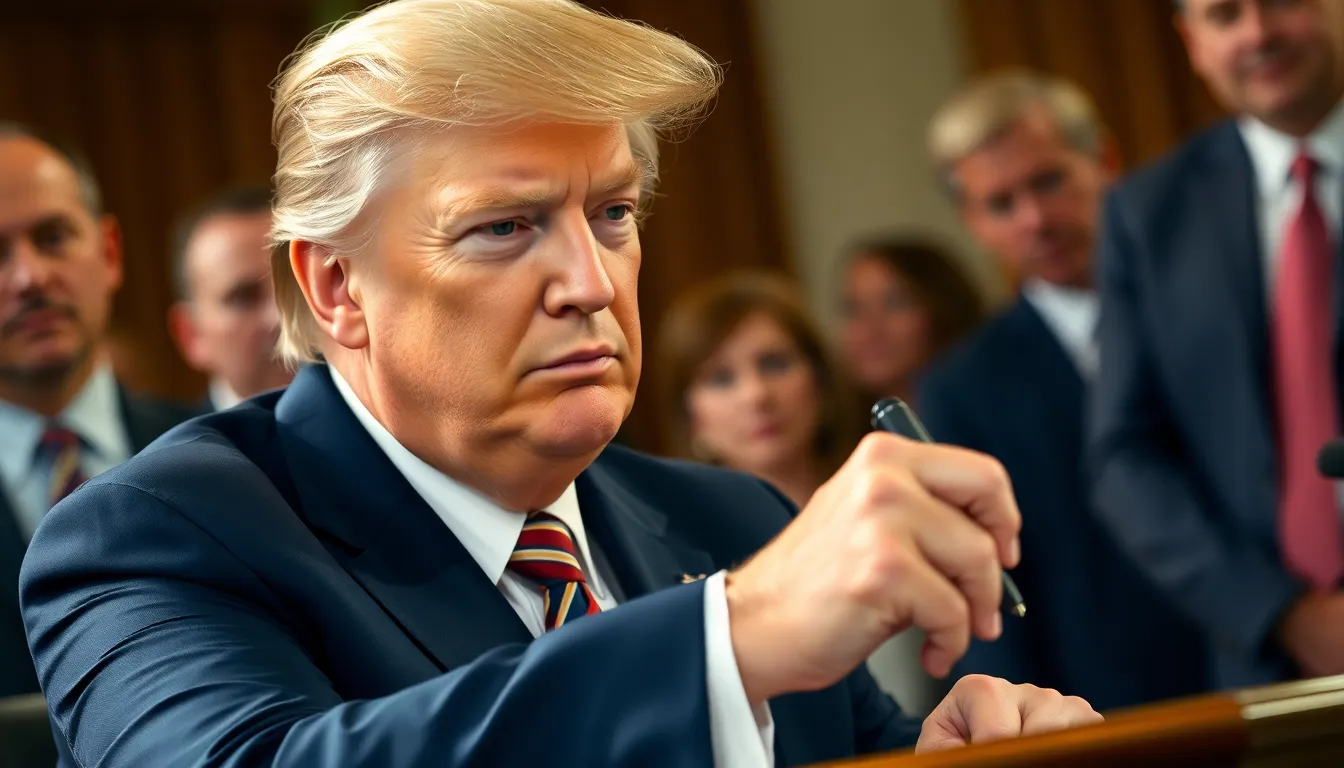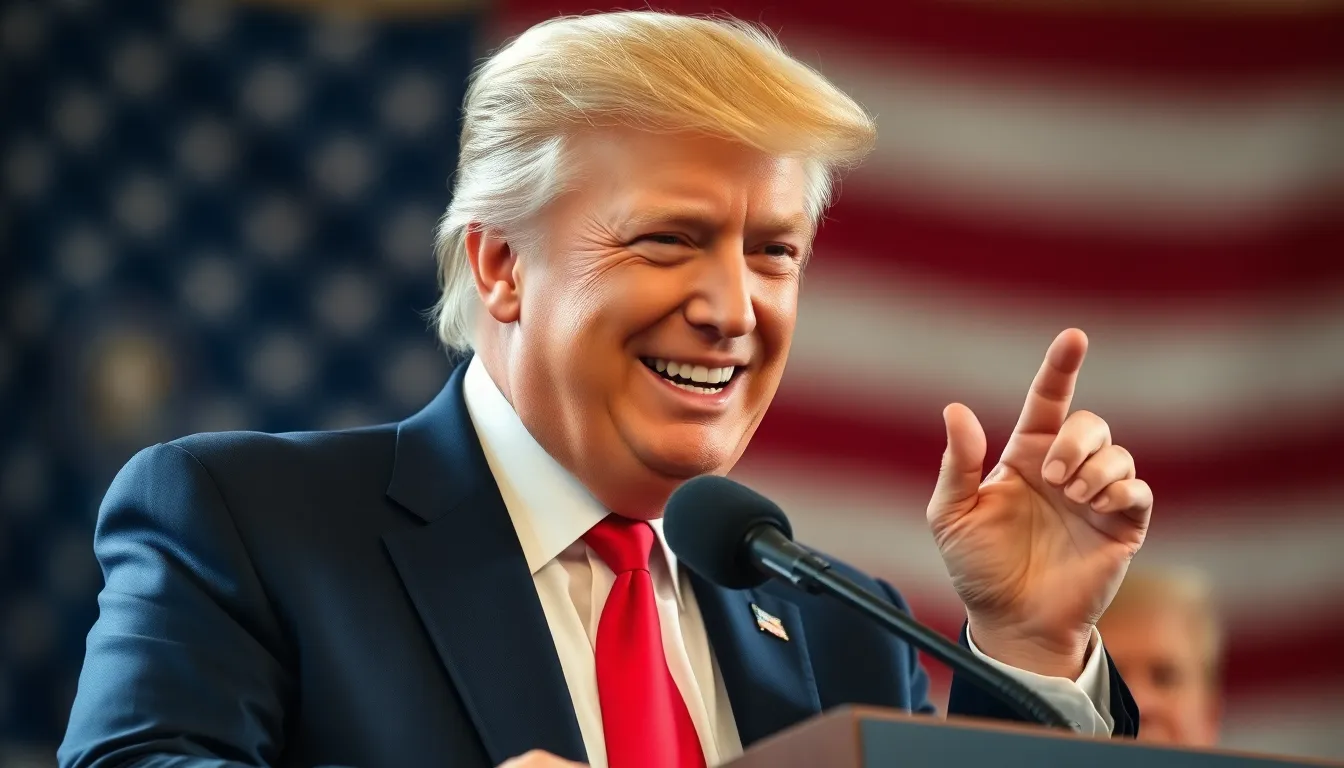When it comes to the quirks of public figures, few topics spark curiosity like the handedness of a former president. Is Donald Trump left-handed? It’s a question that might seem trivial but dives into a world of intriguing possibilities. After all, lefties are known for their creativity and unique perspectives—traits often associated with the unconventional style of Trump himself.
Imagine the former president signing executive orders with his left hand while making a bold statement. It’s a fun thought, isn’t it? Whether he’s tossing around golf clubs or wielding a Sharpie, the mystery of his handedness adds a layer of intrigue to his larger-than-life persona. So, let’s explore this quirky topic and uncover the truth behind Trump’s handedness—because sometimes, the smallest details can reveal the most about a person.
Table of Contents
ToggleOverview of Left-Handedness
Left-handedness occurs in about 10% of the global population. This trait influences various aspects of life, including motor skills and cognitive abilities. Research suggests that left-handed individuals often demonstrate creativity and problem-solving skills.
Left-handed people may process information differently than right-handed individuals. They frequently excel in fields requiring innovative thinking, such as the arts and sciences. Some studies indicate that left-handedness might correlate with divergent thinking, enhancing unique perspectives in various situations.
History shows several notable left-handed figures, including artists, scientists, and world leaders. These individuals often faced challenges in a predominantly right-handed world. Famous left-handed people like Leonardo da Vinci and Albert Einstein demonstrated exceptional talents, illustrating the potential advantages of left-handedness.
Cultural perceptions of left-handedness vary significantly. In some cultures, left-handed individuals faced stigma and negative associations, while others embrace left-handedness as a distinctive trait. Adjustments are often necessary for left-handed people in environments designed primarily for right-handed individuals, affecting tools and everyday items.
Handedness also possesses genetic components, as research suggests a hereditary link. Though the exact mechanisms remain unclear, genetics likely play a role in determining whether a person is left-handed. Understanding these dynamics can provide deeper insights into human behavior, preferences, and capabilities.
Donald Trump’s Writing Hand

The topic of Donald Trump’s writing hand fuels curiosity about his handedness. Observations during public events reveal insights into his habits.
Observations from Public Appearances
Numerous occasions highlight Trump’s preference for his right hand. During speeches or signing ceremonies, he predominantly uses this hand. Visual evidence supports the conclusion that he engages with objects and gestures with his right hand. Some right-handed individuals develop unique techniques when transitioning to left side activities. His posture and stance also appear tailored for right-handed use. Discernible habits, such as how he grips items, reinforce the understanding that he is right-handed.
Analysis of Signature Styles
Examining Trump’s signature also provides clarity on his handedness. Analysis shows the slant and pressure of his penmanship consistent with right-handed individuals. Notably, many right-handed signatures reveal specific fluid motions. Trump’s signature exhibits that same characteristic style. Comparing his signature to those of confirmed left-handed figures highlights the differences in slant and flourish. In-depth examinations of signature patterns clarify that Trump’s writing aligns with right-handed conventions.
Theories Surrounding Left-Handedness
Exploring the theories around left-handedness reveals intriguing connections to various fields.
Psychological Perspectives
Right-handedness is often linked to traditional cognitive processing styles. Left-handed individuals frequently exhibit differences in brain hemisphere usage, which can lead to unique problem-solving strategies. Creativity tends to flourish among left-handed people, influencing artistic and innovative capabilities. Various studies suggest these individuals might approach tasks with a more open-minded perspective. Psychological assessments indicate that unconventional thinkers often position themselves outside societal norms. Such traits relate closely to figures like Trump, known for his unorthodox approach in politics and business.
Cultural Implications
Cultural views on left-handedness vary significantly across history and societies. In some cultures, left-handedness is celebrated, seen as a symbol of originality and distinctiveness. Other cultures stigmatize it, associating it with negative traits or bad luck. These differing attitudes affect left-handed individuals’ self-perception and social interactions. Notable left-handed personalities have often reshaped perceptions within their communities. Trump’s potential left-handedness might have sparked discussions on these cultural narratives. As a public figure, his handedness could influence societal attitudes towards left-handed individuals across the globe.
Comparison with Other Presidents
Examining the handedness of U.S. Presidents reveals interesting patterns.
Notable Left-Handed Presidents
Several U.S. Presidents have been left-handed. James A. Garfield, Herbert Hoover, and Bill Clinton are well-documented lefties. Their unique perspectives and approaches may stem from this trait. Historical accounts suggest that left-handedness can influence leadership styles. Studies show that left-handed individuals often demonstrate creativity and adaptability. These attributes might contribute to effective decision-making in complex scenarios.
Impact of Handedness on Leadership
Handedness can influence how leaders interact with their environment. Left-handed leaders, for instance, may process information differently due to brain hemisphere usage. This variance can lead to innovative problem-solving techniques. Research highlights that left-handed individuals often excel in creative tasks, which can shape their leadership approach. Donald Trump’s right-handedness places him in a different category among Presidents. Comparisons with left-handed leaders reveal diverse strategies in governance and perception. Such distinctions underscore the role of handedness in shaping leadership dynamics.
Donald Trump’s handedness has sparked curiosity and discussion among many. While the exploration of left-handedness reveals fascinating insights into creativity and problem-solving, Trump’s right-handedness aligns him with a different set of traits and leadership dynamics. The observations of his writing and gestures provide clear evidence of his right-handedness, distinguishing him from notable left-handed figures in history.
This distinction not only shapes perceptions of his character but also highlights the diverse strategies employed by leaders throughout history. Understanding handedness can deepen the appreciation for the unique qualities that individuals bring to their roles, whether in politics or other fields.


